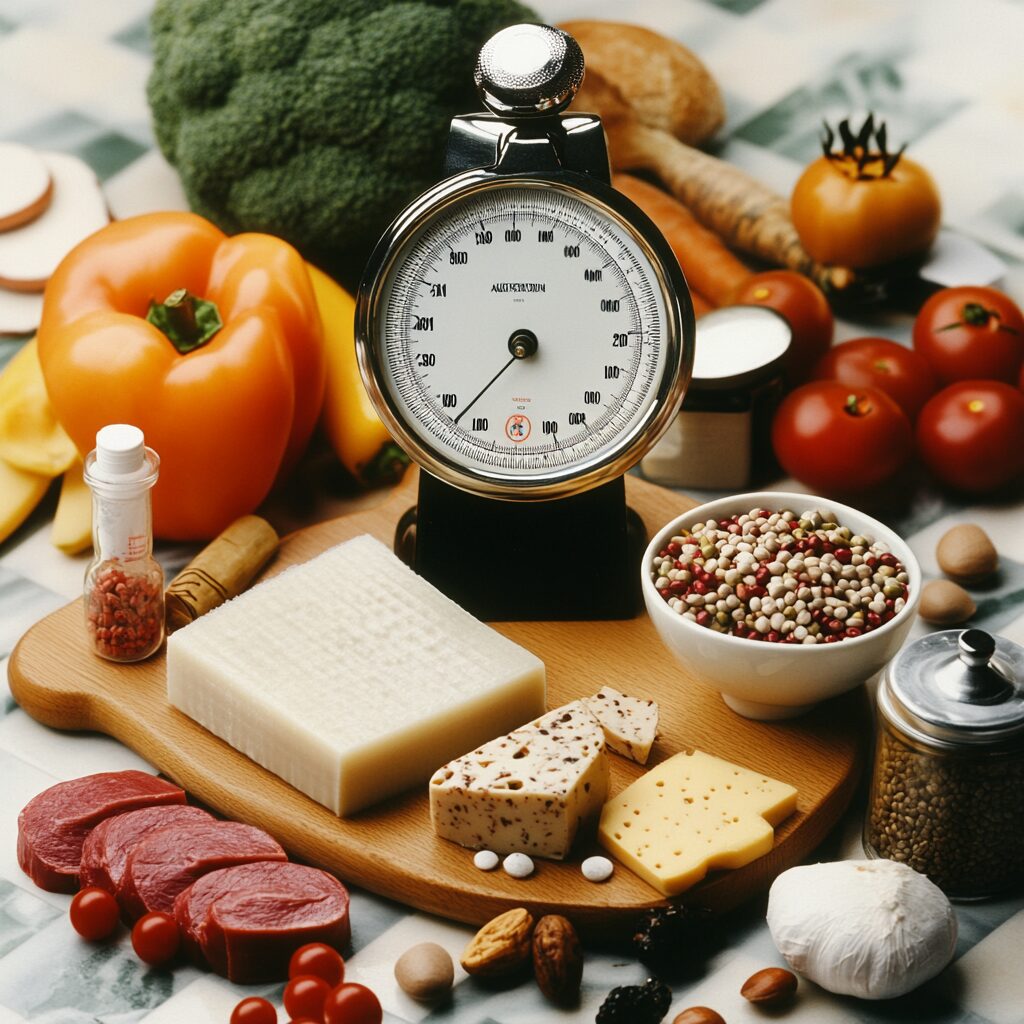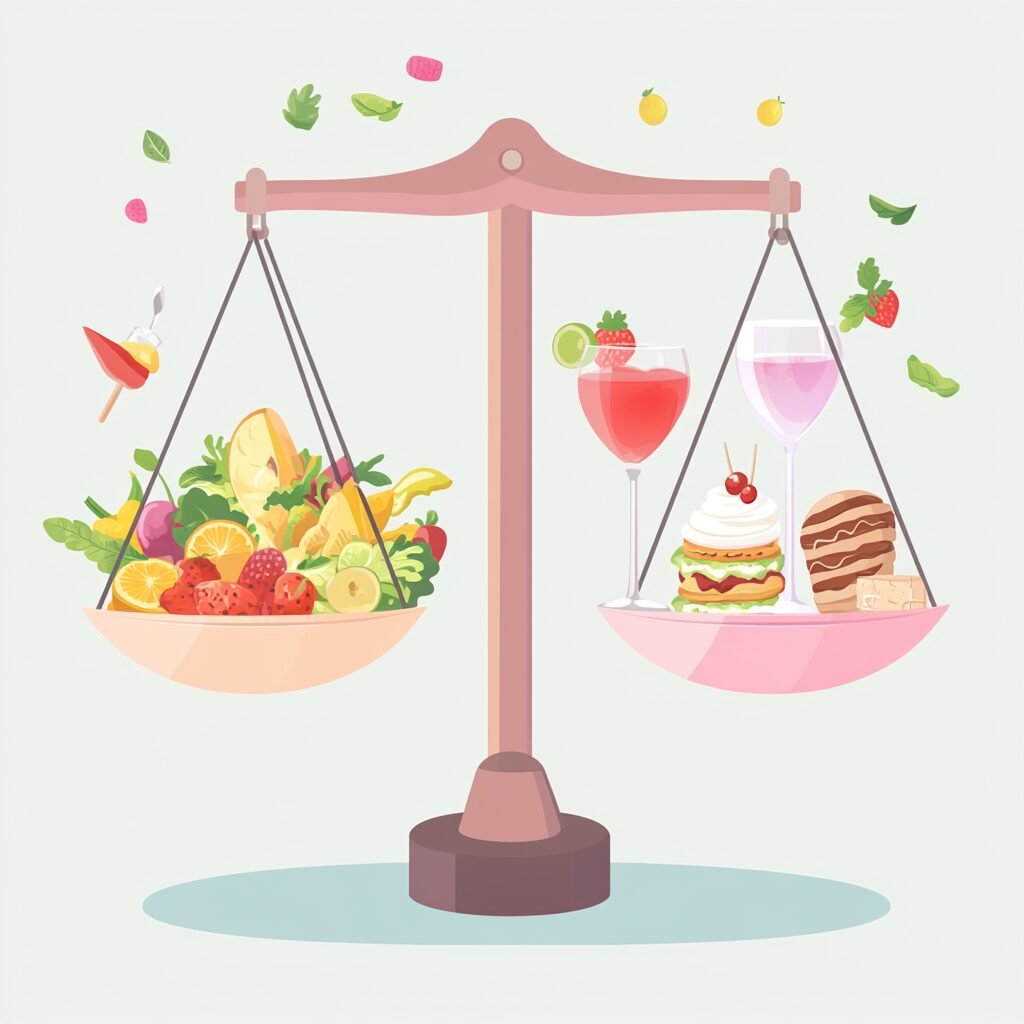The idea of tracking calories to shed weight seems straightforward—consume less than you burn, and the body should stop storing excess carbohydrates as fat, leading to a slimmer waistline. Mathematically, it makes perfect sense.
In theory, maintaining a consistent calorie deficit should guarantee weight loss. But if you’ve ever followed a disciplined eating plan and still found the scale stubbornly unmoved, you’re not alone. As it turns out, the connection between calorie intake and weight loss isn’t as direct as it seems.
First Things First: What is a Calorie?
A calorie is a unit of energy. The word comes from Latin and was first used by a French chemist, Nicolas Clément, in the early 1800s. He defined a calorie as the energy needed to raise the temperature of one gram of water by one degree Celsius.
Later, scientists realized this concept could apply to food. They found that different types of food provide different amounts of energy:
- Fat contains 9 calories per gram
- Alcohol has 7 calories per gram
- Protein & Carbs each provide 4 calories per gram
When we eat, our bodies use these calories for everything—from breathing to moving and thinking. If we consume more calories than we burn, the extra energy gets stored as fat.
Because modern lifestyles often involve less movement, people started tracking calories to help manage weight. The idea seemed simple: eating fewer calories than the body needs should lead to fat loss. That’s why many rely on the idea that “one pound of fat equals 3,500 calories.”
However, weight loss isn’t just about calorie counting. Other factors—like metabolism, hormones, muscle mass, and even stress—affect how the body burns and stores energy. The human body is complex, and a simple math equation isn’t always enough to explain how weight gain and loss work.

Why obsessing over calories isn’t a productive strategy
Here are several compelling reasons to rethink calorie counting as a strategy for weight loss:
- Individual Variations: Each body is unique, with calorie needs varying based on factors like body size, muscle mass, and overall metabolism. Larger, more muscular individuals naturally require more energy than those with smaller frames, making a universal calorie standard ineffective.
- Impact of Physical Activity: Your level of physical activity significantly influences calorie needs. A highly active individual, such as an agricultural worker, requires substantially more energy than someone with a sedentary desk job.
- Dynamic Energy Requirements: Exercise burns a significant amount of energy, necessitating a higher caloric intake for optimal performance and recovery. Severe calorie restrictions can hinder energy levels and make it harder to maintain consistent exercise routines.
- Adaptations to Low-Calorie Diets: The body adjusts to reduced calorie intake by lowering energy expenditure and striving to create a surplus, making crash diets counterproductive and unsustainable.
- Variations in Physiology: Gut microbiomes and individual physiology affect how calories are processed and utilized. The same diet can yield vastly different results depending on these factors, with some people naturally metabolizing high-fat or sugary foods more efficiently than others.
- Food Pairing and Energy Use: Food combinations can influence energy assimilation. For instance, pairing protein with carbohydrates can stabilize blood sugar levels, reducing cravings and ultimately leading to a lower caloric intake without deliberate restriction.
- The Pitfalls of Calorie Counting: People often misjudge their actual caloric intake, leading to inaccuracies. Moreover, obsessing over calories can promote unhealthy behaviors, such as binge-eating after periods of strict restriction, creating a harmful cycle.
Shifting the focus from calorie counting to more holistic approaches—like understanding nutrition, listening to your body’s hunger cues, and prioritizing a balanced diet—can foster a healthier and more sustainable relationship with food.

How to manage calories to lose weight
While calorie intake isn’t the sole factor influencing body weight, it does play a significant role. However, building a weight loss plan solely around calorie deficits is rarely effective on its own. Instead, it’s best to view calorie counting as one tool in a broader strategy. Here’s how to use it to your advantage:
- Start with Baseline Energy Needs: Begin by determining the amount of energy required for your body’s basic functions. The Harris-Benedict Formula (HBF) is a reliable method for calculating your basal metabolic rate (BMR)—the minimum caloric intake needed to sustain life at rest. Although it doesn’t account for physical activity, it serves as a useful starting point.
- Understand the Harris-Benedict Formula: This formula factors in variables like gender, weight, height, and age to estimate BMR, which typically falls between 1,200 and 2,500 calories. You can easily find online calculators to simplify this step.
- Factor in Daily Activity Levels: To get a more realistic number, adjust your BMR based on your activity levels. Multiply your BMR by 1.2 if you lead a sedentary lifestyle, or by 1.4–1.5 if you are highly active. The resulting figure reflects your daily caloric requirement for maintaining your current weight.
By aligning your calorie intake with your body’s specific needs, you can create a tailored, sustainable approach to weight management that complements other strategies like balanced nutrition and regular exercise.
Come up with a realistic calorie deficit target
Once you’ve calculated your energy requirements and identified how much fuel your body needs during a weight loss program, the next step is crafting a thoughtful plan. Losing weight is far from simple, and relying solely on calorie reduction is rarely effective. A smarter, more comprehensive approach is key. Here are some guidelines to consider:
- Combine Proteins and Carbs Strategically: The right food combinations can enhance feelings of fullness and provide essential nutrients. Protein should play a central role in your diet, as it boosts metabolic rate and helps regulate appetite, reducing the urge to binge. Pairing protein with healthy carbs can further stabilize energy levels.
- Hydrate Wisely: Water is a surprisingly powerful ally in weight loss. It accelerates fat-burning processes and suppresses appetite when consumed before meals. Staying hydrated consistently aids in maintaining metabolism and controlling cravings.
- Eliminate Empty Calories: While energy is essential, not all sources of energy are equal. Processed and high-sugar foods—such as sodas and fruit juices—can lead to rapid fat accumulation. Replacing them with nutrient-rich options like fresh fruit is an easy and effective substitution.
- Progress Gradually: Avoid drastic calorie cuts, like reducing intake by 800 calories in one go. Gradual adjustments, paired with consistent physical activity, yield more sustainable results. Setting realistic calorie goals ensures you can maintain the changes long-term.
An ideal weight loss plan integrates exercise into the mix—not just to amplify the impact of reduced calorie intake, but also to preserve muscle mass. When calorie intake decreases, the body may target muscle for energy. Combining regular workouts with a protein-focused diet prevents this, helping you achieve weight loss while maintaining muscle definition.
